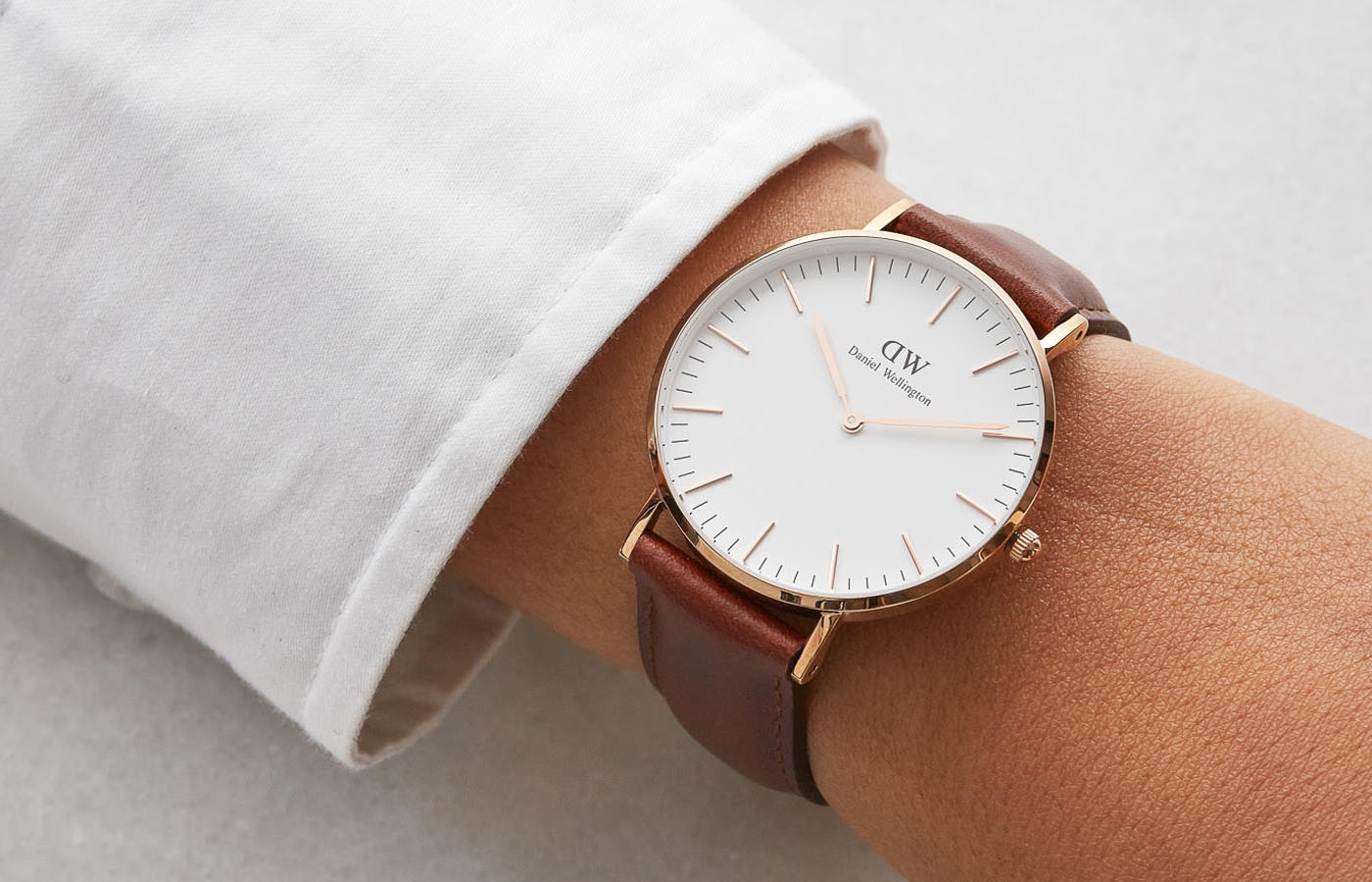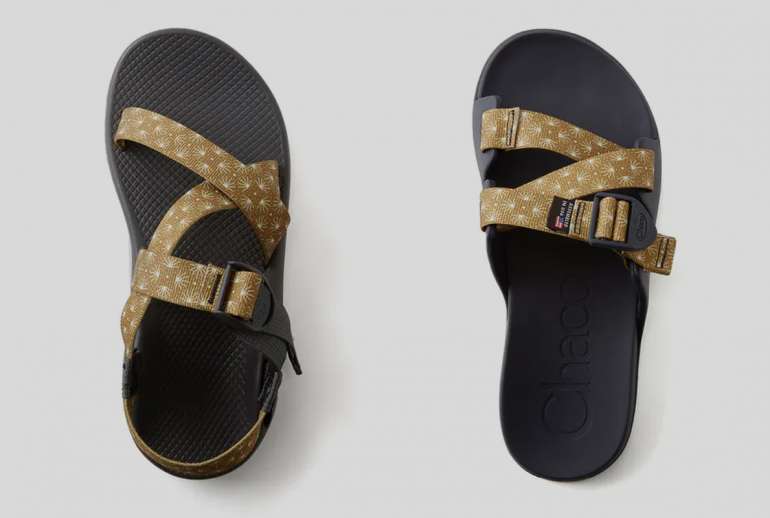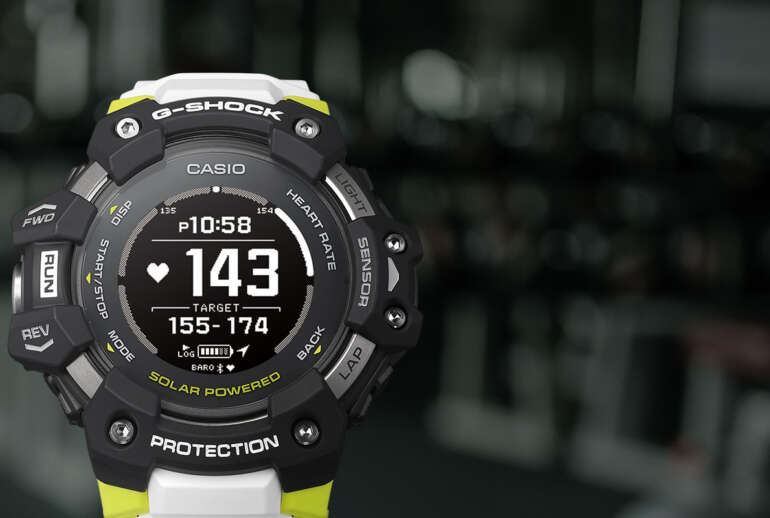This is how much that Daniel Wellington you’ve been eyeing ought to cost:
It’s powered by a Miyota 1L22 Japan Quartz Movement, which costs as little as $4.95. Colorful straps like the striped Nato straps that have given DW are made in China and can cost as little as $1 or two. The watches are also assembled in Chinese factories, which brings the cost way down. In all, the real cost price of a DW – and so many quartz-powered fashion watches today like MVMT, Hilfiger and Nixon – can cost as little as $15.
Marketing geniuses
Credit where its due, many of these brands have won the minds of people thanks to its stellar marketing campaigns that allow them to mark up the pricing to well over 10 times its cost. They come with sentimental backstories, like how DW founder Filip Tysander named his brand after a British stranger he met while travelling in the UK. The “actual” Mr Daniel Wellington donned a Rolex with a fabric nato strap that would inspire the look of Tysander’s watches – formal-looking timepieces with funky straps often found in sports watches. It’s a very sweet story, but there’s no real evidence to back it up, nor an event of the actual Mr Wellington identifying himself – who knows if its true?
Tysander and his team have an undeniable appreciation of Insta-nomics, gaining huge popularity and demand for DW watches through effective advertising. DW was among the first to rally the crowd of “micro-influencers” that dominate our feeds today, mini-celebrities in our social circles that companies provide free products to – and a little bit of commission – to advertise for them. Often, these “influencers” are more than happy just to receive free products, and, thus reduce marketing costs for DW.
The result is that paying a few dozen influencers costs less than an A-list celebrity, with far more reach. In 2017, DW was named Europe’s fastest growing company, making over $220 million in revenue.
Kudos to Tysander and his team, but what does it all mean for us consumers? We’re not paying $300 for a good watch, but a cheaply-made product from a factory in China, made desirable by local influencers who really don’t know much about what goes into making a fine watch. You’re paying for the hype train and marketing that these brands are getting away with.
Of course, we can’t expect everyone to be some avant-garde connoisseur of watches. But the real tragedy here is, you can get so much more watch with $300.
What does value in a watch mean
The commercial success of these fashion watches does reflect some fault on more “legitimate” watch brands. They’ve lost touch with modern day marketing tactics and have let these $15 watch brands capture the public’s attention. These brands need to find a way to communicate the value of their watches in a way that captures imagination.
Contrary to popular belief, $300 is enough money to take you into the realms of watches that collectors fancy, or even into the world of Swiss watches – brands that come with history, pedigree, or at the very least, better value for money.
Comfortably below $200, you’ll find a whole range of Seiko watches based on military, pilot and divers’ influences. They may not be the actual models worn, but the designs are closely modelled after designs that are actually filled with history and purpose.
Minimalism is the name of the game right now, but it never started from DW or MVMT. Established makers like Tissot and Nomos have been at it for years, selling minimalistic designs at a similar price, only with better build and expertise.
The materials used in watches like the Orient Bambino, or Tissot Swissmatic and Seiko 5 are also worth far more than factory-produced fashion watches. Most of these involve hand-wound mechanical or automatic movements, which are more expensive to engineer and last much longer. Nicknamed “apocalypse watches”, these non-quartz time pieces last far longer as they aren’t powered by batteries that run out, but by the movement of your hands or by twisting of the crown. Many owners pass these watches on to their kids, and grandchildren, demonstrating the longevity of these watch movements. Conversely, most fashion watches last half a decade or so.
Do your research
You’ll find plenty to learn about the backstory of a watch’s design. Why is the crown set at 4 o’clock? Why does the second-hand skip a beat at the 58th second? What’s up with extra dials or that big bezel? And the deeper you research, the more you’ll be able to share with your friends – one of the joys of getting a watch that is designed with thought and passion.
Not everyone has the time or energy to be obsessive about horology, but at the very least, be sure to get your money’s worth. That strap may look pretty, but remember, it’s the cheapest part of the watch. Replacement straps can be bought cheaply online – so put your money where it counts.



